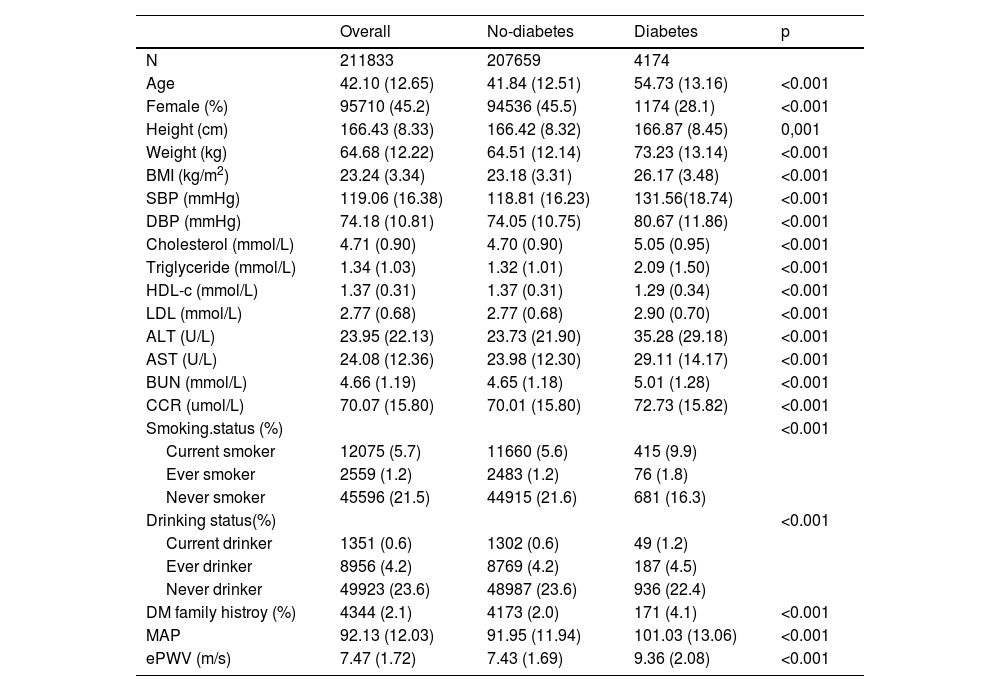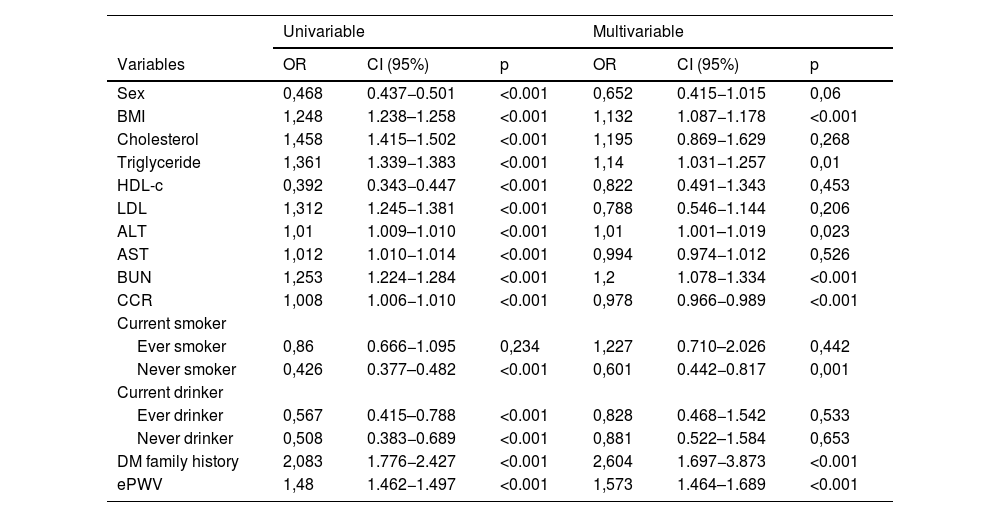Estimated pulse wave velocity (ePWV) and body mass index (BMI) are significant predictors of new-onset diabetes. This study aims to evaluate the impact and predictive value of combining ePWV and BMI on the incidence of new-onset diabetes.
MethodsA secondary analysis was conducted on a cohort study by Rich Healthcare (China), involving 211,833 eligible participants. Logistic regression analysis identified factors influencing diabetes occurrence, while ROC curve analysis assessed the predictive value of ePWV, BMI, and their combination for new-onset diabetes.
ResultsOver a mean follow-up period of 3.12 years, 3,000 men (1.41%) and 1,174 women (0.55%) were diagnosed with diabetes. Logistic regression revealed that BMI, triglycerides, alanine aminotransferase, blood urea nitrogen, creatinine clearance rate, ePWV, and family history of diabetes are high-risk factors for new-onset diabetes. The combination of ePWV and BMI provided a higher area under the ROC curve (0.822) compared to ePWV or BMI alone.
ConclusionElevated levels of ePWV and BMI are independent risk factors for new-onset diabetes. Combining these measures enhances predictive accuracy compared to using either indicator alone.
ePWV y el IMC están estrechamente relacionados con la predicción de diabetes de novo. El objetivo de este estudio fue evaluar el impacto y valor predictivo de la velocidad estimada de la onda de pulso (ePWV) y el índice de masa corporal (IMC) en pacientes diabéticos de novo.
MétodosSe realizó un análisis secundario de un estudio de cohorte realizado por Rich Healthcare (China) con un total de 211833 sujetos elegibles inscritos. Se utilizó el análisis de regresión logística para identificar los factores que influyen en la aparición de diabetes, y el análisis de la curva ROC para evaluar el valor predictivo de ePWV, IMC y su combinación en la diabetes de novo.
ResultadosEn un seguimiento medio de 3,12 años, se diagnosticó diabetes en 3000 hombres (1,41%) y 1174 mujeres (0,55%). El análisis de regresión logística mostró que el IMC, los triglicéridos, la alanina aminotransferasa, el nitrógeno uresanguíneo, la tasa de depuración de creatinina, el ePWV y los antecedentes de diabetes en la familia son factores de alto riesgo para la diabetes de novo. En comparación con el uso de ePWV o IMC de forma independiente, a combinación de ePWV e IMC proporcionó un área bajo la curva ROC más alta (0,822) en comparación con ePWV o IMC de forma independiente.
ConclusiónLa elevación de los niveles de ePWV y IMC es un factor de riesgo independiente para la diabetes de novo, y la combinación de ePWV y IMC puede predecir mejor el inicio de la diabetes en comparación con el uso de ambos indicadores de forma independiente.
Article
Diríjase desde aquí a la web de la >>>FESEMI<<< e inicie sesión mediante el formulario que se encuentra en la barra superior, pulsando sobre el candado.

Una vez autentificado, en la misma web de FESEMI, en el menú superior, elija la opción deseada.

>>>FESEMI<<<









